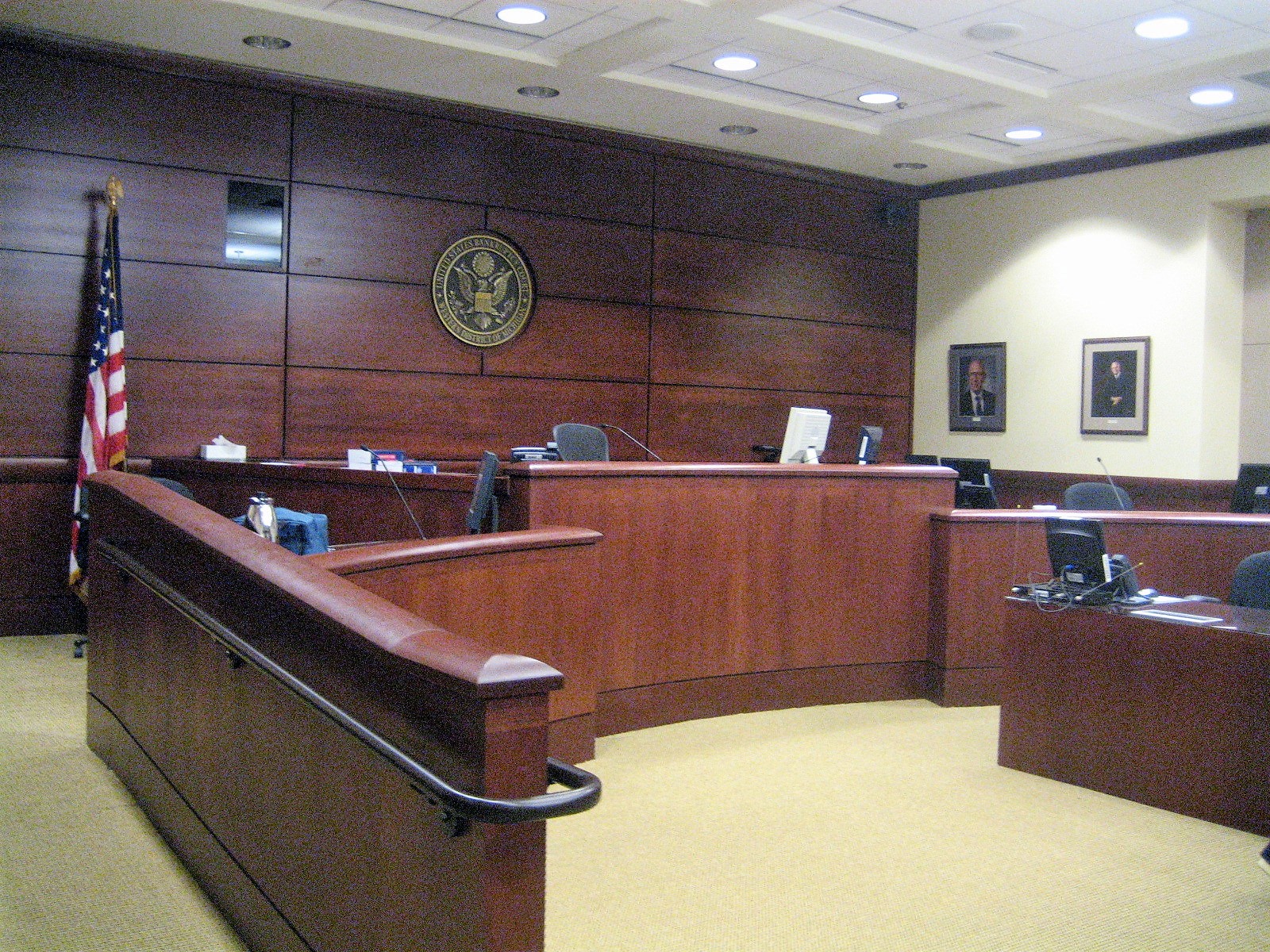In my previous articles on courtroom layout options, I have addressed such issues as sightlines, furniture options, and access requirements. My focus in this post will be on the core element of the courtroom: the location of the judge's bench.
A trial courtroom is normally comprised of six components including the judge's bench, witness stand, jury box, spectator area, attorney tables, and court reporter/court clerk/bailiff area. The locations of these components within the courtroom are based on the functional requirements of the respective participants in the trial proceeding. For most of these components, the standards for their locations are simple, do not vary, and are always tied to the location of the judge's bench. They are as follows:
- Judge’s Bench: near access point from judge’s chambers or restricted judge circulation
- Witness Stand: immediately adjacent to judge’s bench with clear sightlines to the jury and courtroom participants
- Jury Box: off to the side of the judge’s bench near jury room access with clear sightlines to the judge and courtroom participants
- Spectator Area: adjacent to public access, opposite the judge’s bench
- Attorney Tables: in front of judge’s bench with the defendant’s attorney table closest to prisoner entry point
- Court Reporter/Court Clerk/Bailiff Area: in front of or beside the judge's bench with a clear view of participants (this area can also include an interpreter)
However, a major issue for placing the courtroom components is the location of the judge's bench. Should the bench be in front of the center or corner of the courtroom? The answer to this question depends upon the amount of available space in the courtroom and the proportions of that space.
The key dynamic is to maximize the available space in the courtroom with an emphasis on preserving the location of the components within the courtroom well area as presented above. The ability to fit all of the parties comfortably and safely into the well area while preserving sightlines is key to how well a courtroom functions.
For standard size, rectangular courtrooms, a center bench is normally the most practical option. Having the bench centered on the front wall provides an anchor point for the balanced layout of the courtroom.
In a courtroom that is smaller than standard, or uneven in its proportions, a corner bench may allow for more space in the well area than a traditional center bench arrangement. Having the bench in the corner still places the judge in a visible position and it allows the well area to be laid out in a diagonal fashion to provide more spacing for the courtroom components.
Though this article focuses on center and corner placed benches, in some cases, such as in an overly wide courtroom with a short front-to-back dimension, a side bench can be used.
Judge's Bench Locations
The photos that follow show examples of both a center and a corner bench arrangement.
 As seen in the above examples, the location of the bench should be determined by the dimensions of the courtroom. Both the center and corner bench arrangements can allow enough space for a well-functioning courtroom. While the center bench in front of the courtroom is the most common approach, it is not the only way to configure a courtroom. Designers should keep an open mind and place the bench in a location that allows the most functionality in the courtroom, as well as preserving critical sightlines and adjacencies.
As seen in the above examples, the location of the bench should be determined by the dimensions of the courtroom. Both the center and corner bench arrangements can allow enough space for a well-functioning courtroom. While the center bench in front of the courtroom is the most common approach, it is not the only way to configure a courtroom. Designers should keep an open mind and place the bench in a location that allows the most functionality in the courtroom, as well as preserving critical sightlines and adjacencies.
_____________________________________________________
Click on the image to download our Courtrooms and Chambers: Conceptual Design and Analysis eBook





.jpg)
.jpg)
.jpg)
.jpg)
.jpg)
.jpg)


.jpg)
-1.jpg)
.jpg)
.jpg)
.jpg)
.jpg)
.jpg)
.jpg)

